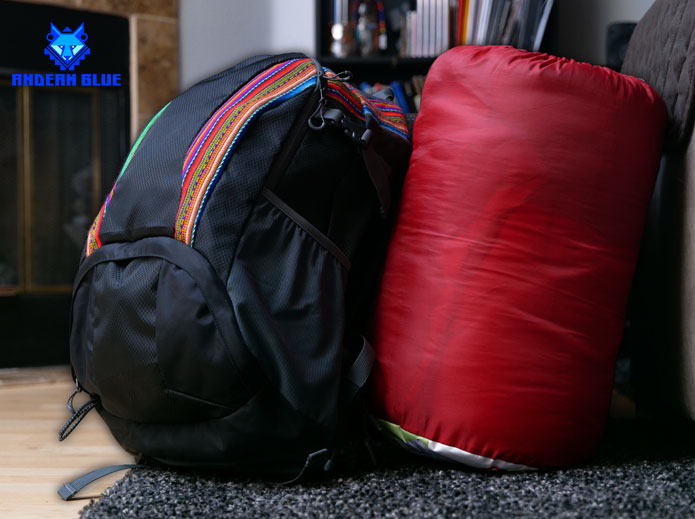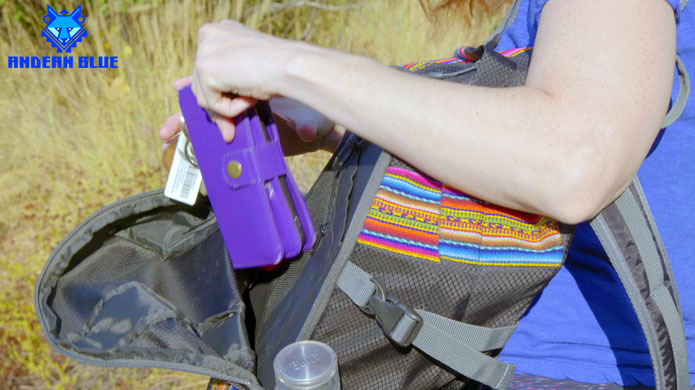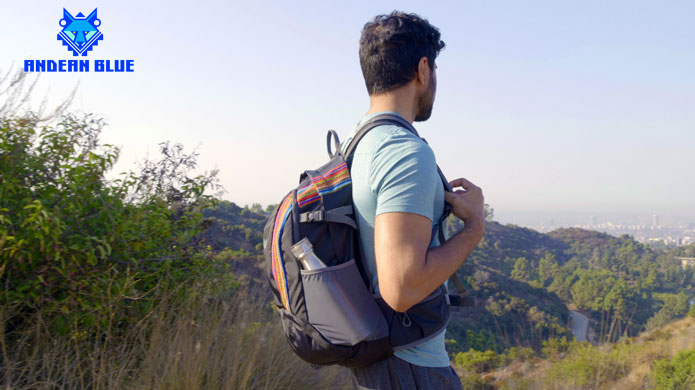What is a day bag?
Hiking day bags are small backpacks designed for day hikes lasting no longer than a few hours. As the name implies, day bags are the smallest members of the backpack family. They typically range in volume from 1200 to 2500 CU.
A day bag is a lightweight, portable backpack that you can use for short periods. They’re great for touring a new city or returning to a place you’ve been before. It is common in modern English to refer to a tiny, lightweight backpack as a day bag because it is just large enough to carry materials for one day’s worth of activities.
Keeping an eye out for pickpockets and theft was crucial, so put the creative brain to work and devised a few new ways to keep valuable stuff (such as a passport and wallet) safe in a day bag.

Outdoor activities that require more gear than you can carry in your pockets for the day require bringing a day backpack to keep everything organized. There are various functional differences between daypacks that may appear to be the same at first glance.
In the future, these suggestions can assist other solo travelers in preparing ahead for safe ways to store and protect their personal belongings such as their passport, ID, and cash while on the road.
Consider the following four factors when purchasing a day bag:
1. Activity
The way you want to utilize the day bag will significantly impact the features you require.
Hiking:
- Most hiking day bags are hydration reservoir compatible and contain water bottle pockets on both sides.
- There are various torso size variations and suspension styles to pick from, so you can find a bag that’s perfect for you.
Climbing:
- A padded back and/or frame sheet enable them to carry heavier loads more comfortably. A-frame helps to focus weight on the hips.
- Include gear lashing loops for ice axes, patches for crampons, and daisy chains.
- These climbing bags can be used for backcountry skiing because of the extra strength and thick fabrics that help reduce scratch damage.
Running:
- When jogging, consider wearing a waist pack, hydration vest, water bottle pack, or a small technical day bag.
- These bags are made to minimize jarring when running.
- Snacks can be easily accessed thanks to the pockets’ placement.
- Hydration reservoirs are compatible with the majority of vests and packs.
2. Capacity
The capacity of hiking day bags might vary substantially. If you’re unsure what size you need, make a list of everything you own. Is there enough room in them to bag your favorite jacket? Is there enough room for snacks for the travels you go on? Is it large enough to accommodate the essentials?
Normal capacity range:
- 10 liters is the minimum amount.
- Between 11 to 20
- 21 to 35
- 36- to 50-liter capacity
The size of your day bag will also be determined by the amount of stuff you plan to bring.
3. Features
Frame type, pack access, and other features all impact how well the bag works for you.
Type of Backpack Frame: Day bag
- Frameless
- Frame from the inside out
Access to the Pack
- Top
- Bottom
- Front
- Side
Reservoir of Hydration
These day bags come with a hydration reservoir sleeve built-in (reservoirs are often sold separately). Hydration Packs, which feature a reservoir, are commonly referred to as “day bags.”

4. Fit
The most critical fit criteria are torso and hip length and width.
Wearing a suitable day bag has the following advantages:
- A torso-length-appropriate size.
- Maintaining a snug, but not too tight, fit around the hips.
You can try on a variety of backpacks in our store to pick the right one for you. If you can’t make it to an online shop, ask a buddy to help you figure out your torso and hip measurements.
Measure the length of your torso.
The torso of these backpacks can be customized to match your specific needs. This is also a good decision for those of you who plan to share the backpack or purchase one for your growing child.
Size of the waist
Day bag belts are typically available in sizes ranging from the mid-20s through the mid-40s. Before purchasing a day bag, make sure the hipbelt fits appropriately around your hips.
Why do I need a day bag?
A day bag (hiking or otherwise) is ideal for day hikes, daily commuting, coffee shop runs, beach days, and urban adventures. It can be used as a carry-on or a camera bag. It can also be packed into more oversized luggage or backpacks for use on short trips while traveling.
When is a Day bag used?
A day bag containing essentials is one of the best pieces of travel advice you’ll get; whether you’re traveling across the country or just across town, you’ll want to use these day bags.
Keeping all of your key belongings in one room helps you stay organized and reduces moving day stress.

Your essential bag’s size depends on your travel. Longer travels, especially overnight trips, require a larger bag due to limited access to other necessities. It’s okay to have a slight excess if you have the essentials. When you carry a day bag, you ensure that you have quick and easy access to the things you need.
So, what should you pack? Whatever you need, these basic supplies should get you started.
- Your keys and wallet.
- Medications
- Documents of critical importance
- Contact information
- Electronics
- Pen and a piece of paper
- Tissue Roll
- A compact toolbox
- Use scissors or a tiny knife
- few biscuits and a bottle of water
- Cloths
As the name implies, a day bag is used for activities that require the transportation of a day’s worth of gear. These activities include anything from hiking and climbing to commuting, traveling, and going to school.
1. Day bag for Day Trip
Day trips are one of the most enjoyable aspects of traveling, in part because we can leave our luggage at home and travel light – frequently with only a compact day bag.
“I like the idea of only needing a small backpack and camera to go sightseeing or trekking, but I also want to strike a good balance between being ultralight while traveling and being well-prepared. Small items like a bandage kit, a nail file, a safety pin, or an Aspirin that help ease minor irritations can easily be included in my pre-packed day trip essentials bag”.
2. Day bags for Hiking
Planning for hikes lasting two to six hours should include water, a lunch, and potentially extra clothing depending on the weather conditions. Hiking day bags should be equipped with padded shoulder straps and a sternum strap that spans the chest to help keep the pack stable when hiking.
If you’re transporting equipment, clothing, or food for others, you may want to add extra to a medium backpack.
3. Day bag for Climbing
These specialist packs should be small and sleek, with only a few exterior compartments to keep the weight down. The waist belt should be removable, or it should not be present at all. The fewer objects that can impair your mobility or lead you to become hooked with other things, the best.
Once again, the size you choose will be determined by how much gear you’ll be carrying. You only need to bring your shoes, a chalk bag, and some water or snacks for an afternoon climbing session, so a smaller backpack will be enough. However, if you’re planning on going rock climbing for the day, you’ll need something a little more substantial.
4. Day bag for School, Commuting, or Travel
Children and teenagers should not be carrying more than 10 percent to 15 percent of their body weight on their backs at any given time. Attempting to do more than this can result in back problems that linger well into adulthood. The weight limit for a 70-pound toddler is 10 pounds, and for a 100-pound teenager, the weight limit is 15 pounds, respectively. Therefore, it is advisable to limit the overall volume of the day bag to a minimum.
Organization panels are also very excellent for keeping tiny objects such as pens and pencils, a phone, keys, and other small items within easy reach of you.
Finally:
If you’re hiking or climbing, your next purchase should be a day bag before you leave. These backpacks are typically used when a person goes hiking, climbing, or engaging in any other type of trip for any reason. You can see some hiking day bags ate our store.

